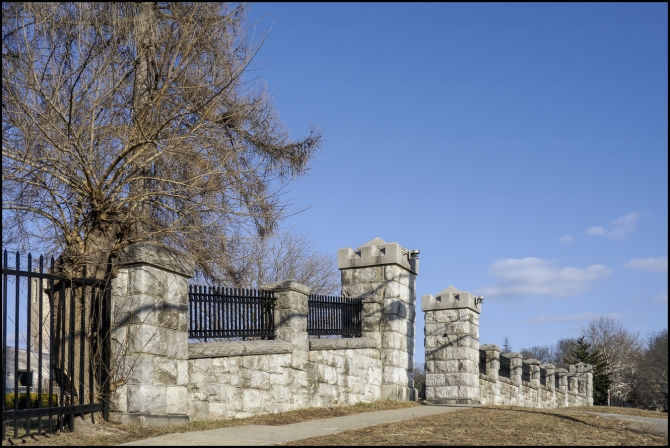The Village of Ossining can trace its beginnings to 1685, when the Sint Sinck Indians sold their land along the east side of the Hudson River to Frederick Philipse, who established a large manor. After the Revolution, the lands were confiscated from his grandson, a British loyalist, and sold to patriotic tenant farmers who had worked the land for years.
The community prospered as a port, with most of its settlement on the riverfront. On April 2, 1813, Sing Sing became the first incorporated village in Westchester County. In 1825, the village was chosen as the site of the Mount Pleasant State Prison, due to its proximity to the city (prisoners were sent “up the river”) and large quantity of white limestone. This stone became known as Sing Sing marble, and was used for buildings, walls and other products. In 1851, the State gave the prison the same name as the village: Sing Sing. The arrival of the electric chair at the prison in 1892 brought unwanted attention and in 1901, the Village changed its name to Ossining, to separate itself from the penitentiary.
The Sing Sing Marble Structures are historically significant for their use of marble quarried by convict labor at Sing Sing Prison between 1825 and 1920. Sing Sing Prison was the first correctional facility in New York State to employ prisoners as laborers for the extraction of raw materials for the purpose of revenue generation, and a number of structures of architectural, cultural, and historical significance in Ossining, New York City, and Albany, New York were built using this material. Sing Sing Marble, quarried at the Ossining prison of the same name from 1825 until approximately 1920, was utilized in the construction of many institutional, religious, and commercial structures in downstate New York and the Capitol Region. The presence of limestone and marble deposits on the Hudson River waterfront in this location was one of the main reasons for the establishment of the prison, as the prisoners would provide a built-in labor pool for both the extraction of the marble and construction of the prison itself. Once that was complete, the convicts would continue to quarry marble and the revenue generated by its sale would be used to pay back the capital costs incurred by the State of New York in constructing the prison as well as to help fund the prison’s operation. The easy access to the river afforded by this location also allowed the marble to be easily transported to the markets of New York City.
The use of prisoner-quarried marble was controversial from the start. New York area professional stonecutters saw Sing Sing Marble as an illicit attempt to undercut their livelihood, and this sentiment led to labor strikes by the stonecutters in both 1824 and 1834. The second of these came to be known as the Stonecutter’s Riot of 1834, an uprising resulting from the decision by New York University to construct its main campus buildings using marble from Sing Sing. The strike took place in Washington Square and lasted for four days, reaching a level of intensity that led the mayor of New York City to request the support of the Seventh Regiment of the New York State Militia. This eventually led to the formation of the first unions for the stonecutters. Quarrying of marble at Sing Sing Prison continued until the practice was ended in the early 1920’s by the arrival of reformist warden Lewis Lawes, who served as warden from 1920-1941.
The retaining wall in the above picture is one of a number of examples of Sing Sing Marble in the village.
Taken with a Sony RX100 MVII.

